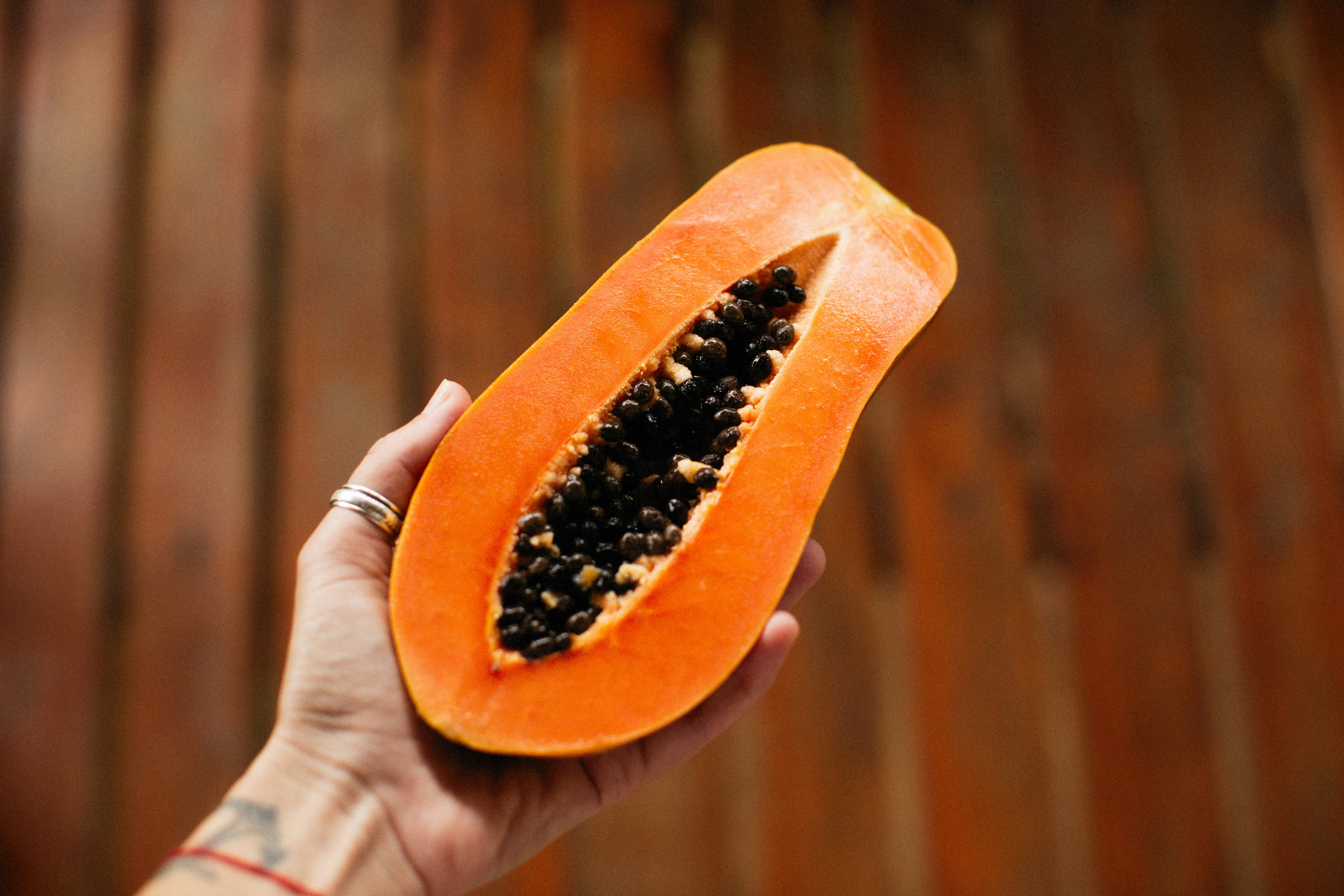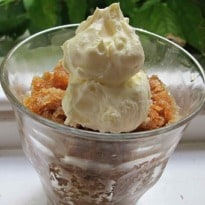When it's this warm, even my beloved ice-cream can seem too much like hard work. The heat demands something lighter - a silky sorbet, perhaps, or the refreshingly crunchy granita so popular in sweltering Sicily, where they have a bit more practice at dealing with this kind of weather. They come in all sorts of flavours from almond to mulberry, but king of them all is the coffee variety; the ultimate summer pick-me-up.
Indeed, Marcella Hazan writes that "on an afternoon slowed down by the southern sun", granita di caffè is "one of the best ways to while away the time, watching life dawdle by as you let the granita's crystals melt on the tongue, spoonful by spoonful, until the roof of your mouth felt like an ice cavern ..." while Anna Del Conte associates it with "balmy Mediterranean nights".
We may have neither southern sun nor a balmy sea, but it's certainly hot enough in Britain as I write this for the attractions of an icy-cold caffeine hit to be quite evident. And in the absence of an obliging Sicilian cafe within a thousand miles, I'll just have to make my own ...
The coffee
Most coffee granita recipes call for vast quantities of espresso, which can prove expensive unless you have your own gear - 900ml of the stuff racks up quite the bill at my local coffee shop. In the absence of a few hundred spare quid to splash on a machine, I also experiment with my trusty stovetop espresso maker (which, in fact, as coffee snobs will no doubt point out, does not make true espresso, but one good enough for this purpose), some "instant espresso" and Elizabeth David's method using ordinary ground coffee. David makes some very strong, sweet coffee in an earthenware jug, then simmers the jug in a pan of hot water for half an hour. Once cooled, the coffee is poured through fine muslin.
To be honest, the question is largely one of strength; the instant espresso proves too weak when made according to the packet instructions, but a few extra spoonfuls give it the same oomph as the espresso, stovetop coffee and David's version. I suspect few people would pick up the subtle nuances of proper espresso here, so unless you have your own machine, it's a waste of money and time explaining to bemused baristas why you want umpteen shots of the stuff.
All the methods suggested work just fine, but I'm going for the simplest, from Caroline and Robin Weir's definitive Ice Creams, Sorbets and Gelati (which they credit to the Gelateria Tirreno in Formia on Italy's western coast, which apparently specialises in granita di caffè espresso). Ground espresso coffee is added to a pan of hot water, brought to the boil, and left to infuse for five minutes before straining. Quick and easy, with minimal washing up.
The sugar
Everyone, save for the Weirs, uses ordinary sugar instead of sugar syrup. Initially, I wonder whether syrup helps give granita a softer, lighter texture, but on reflection, softness isn't really what we're after here, and it doesn't seem to make much difference in any case. I happen upon a possible explanation in Harold McGee's The Curious Cook, where he speculates that pre-prepared syrups are used by professionals for speed, when making up several large batches of ice a day. He also suggests that early recipes called for the sugar to be "clarified" by boiling with water in order to remove the impurities common in 17th-century sugar. So I'm going to stick to ordinary sugar - but in what ratio?
Granitas are generally lower in sugar than other water ices, such as sorbets and sherbets, because the higher the sugar content, the softer the texture - according to McGee they tend to be 15-20%, as opposed to 20%-plus for other water ices, and 30% for the softest, sweetest sorbets. The ratios of coffee to sugar varies wildly, from four parts liquid to one part sugar in the Weirs' recipe, to 29:1 in Hazan's version. I find the former too sweet and the latter far too bitter - I prefer the 12:1 suggested by Anna Del Conte, though it's easy to adjust this to suit the sweetness of your own tooth.
The method
The Weirs are stern on this, insisting that "for a classic granita, there are no shortcuts!" - only regular beating with a fork during the freezing process will yield the correct "free-running ice of uniform consistency made up of large, flavoured ice crystals not dissimilar in size to rice grains". David and Katie Caldesi's Italian Cookery Course recommends the same method.
Del Conte freezes the whole thing until solid, then plunges the block of coffee-coloured ice into hot water, before beating it back into crystalline submission. This proves both messy (the granita is half liquid, half solid after its hot bath) and inefficient. Hazan happily embraces modern technology, freezing the granita in ice cube trays (presumably so it solidifies faster), then whizzing it briefly in a food processor. I find this makes her granita too smooth, though it's a good cheat if you're preparing it overnight. The Weirs are right; that gorgeous granular texture takes elbow grease. (Not much of it, thank goodness; a minute or so with a fork every hour.)
Both they and Deb Perelman, the author of the Smitten Kitchen blog, recommend chilling the mixture before freezing. This sounds obvious, but most recipes just cool it at room temperature and some, including Caldesi's, pour it hot into a chilled bowl and freeze it straight away. Putting it into the freezer chilled speeds up the process considerably.
The extras
The Weirs add lemon zest and juice to their granita. I'm surprised to find I really like the sour note of the lemon, which accents the bitter fruitiness of the coffee, though I can't pick up the zest. Caldesi suggests serving the granita with a shot of brandy, which is a nice touch, and would work brilliantly after dinner with just about any spirit you have to hand. Hazan, Del Conte and the Weirs top theirs with sweetened whipped cream, which makes it into more of a dessert, and proves a lovely contrast to the bittersweet, crunchy ice itself. Not essential, but then cream rarely is.
The perfect coffee granita
(Serves 4)
40g ground espresso coffee (or 500ml freshly brewed espresso)
40g caster sugar
½ tbsp lemon juice
200ml whipping cream (optional)
2 tbsp icing sugar (optional)
Put the coffee in a pan with 500ml water. Bring to the boil, stirring occasionally, then turn off the heat. Leave to sit for five minutes, then pour through coffee filters or a fine muslin to strain. Stir the sugar into the hot coffee to dissolve. Add the lemon juice and allow to cool, taste for sweetness (remembering the flavours will be muted by freezing, so it should be slightly too sweet at this point), then chill in the fridge.
Pour the mixture into a large, flat dish to a depth of no more than a couple of centimetres, cover and put in the freezer.
After about 45 minutes, check on it - as soon as it starts to solidify around the edges, stir with a fork, mixing the solid ice into liquid. Repeat about every half an hour until you have a light cloud of crystals.
Whip the cream with the icing sugar, if using. Spoon the granita into glasses, top with a dollop of cream, and serve immediately.
Granita, sorbet, ice-cream or fishbowl-sized margarita slushy - what's your vice of choice in this hot weather? Do you prefer your granitas sour and crunchy or soft and sweet, and can anyone suggest any more imaginative flavours than coffee, lemon or strawberry?
Felicity Cloake's perfect coffee granita. Photographs: Felicity Cloake for the Guardian.










